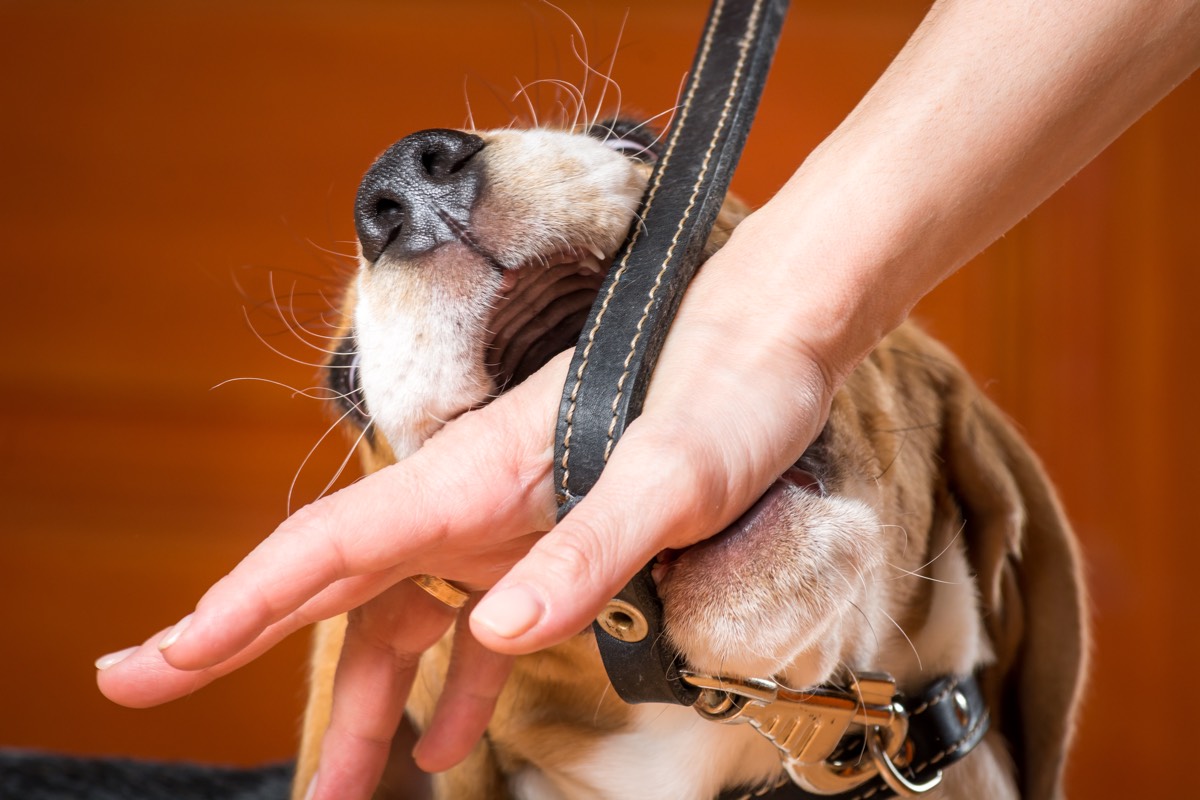A Woman Needed a New Hip Replacement Because of … a Dog Scratch

Dog owners may occasionally get scratched by their pet — but for one woman in the United Kingdom who got scratched on the back of the hand by her dog, the incident turned into a much bigger ordeal than she could've expected.
Namely, the unremarkable scratch was the source of an infection in her artificial hip joint nine months later, according to a new report of the woman's case.
When the 66-year-old woman first told doctors about her hip pain, they were puzzled. Indeed, it took them a while to pinpoint the culprit of her pain: a bacterial infection caused by Capnocytophaga canimorsus, a species of bacteria commonly found in the mouths of dogs and cats, according to the report, which was published Feb. 27 in the journal BMJ Case Reports.
The woman was otherwise healthy and fit, but she had a total hip replacement 15 years earlier, before this latest episode of pain flared up in the same hip. Bothered by this pain for four months, she went to her orthopedist, who, after reviewing her X-rays and blood tests, suspected she had an infection in her artificial hip joint. [27 Oddest Medical Cases]
So, the woman was sent for a hip biopsy, in which fluid was taken from her hip and was sent to a lab.
Seven samples were collected at this biopsy, but only one of those samples grew an organism that the local laboratory could not identify, said lead author Dr. Irasha Hettiarachchi, a medical microbiologist at the University Hospital of Wales. (After the samples are taken, scientists see if any contain bacteria that can be grown in a lab dish.)
A second lab subsequently identified the mystery organism as C. canimorsus, but at this stage of the case, it was unclear if these bacteria were the cause of her infection, Hettiarachchi said. This was because the scientists found the specimen in only one of the seven samples, which is unusual, she added.
Sign up for the Live Science daily newsletter now
Get the world’s most fascinating discoveries delivered straight to your inbox.
So, the woman was sent for a second hip biopsy and another round of tests. At this point, about 14 months after she first saw her orthopedist for this problem, C. canimorsus was again found in one of the three samples tested.
These findings confirmed that the woman's infection was indeed due to this pathogen, Hettiarachchi told Live Science. X-rays of her right hip showed thinning and destruction of the bone and loosening of her prosthetic joint, all of which suggested that the joint was infected, she explained.
Scratch transmits infection
The bacteria that cause a Capnocytophaga infection can be found in the mouths of dogs and cats. In this case, the woman's dog may have transferred the organism from its mouth to its paws through licking, and then transmitted it to the woman through a scratch, Hettiarachchi said. Animal bites or licks are the more common routes of transmission, she noted. [11 Ways Your Beloved Pet Can Make You Sick]
It was only when the doctors figured out that the woman had an animal-related infection that the woman recalled being scratched by her pooch nine months before she first turned up at her orthopedist's office to report the pain.
What's also unusual about the case is that the woman's infection came on more slowly than doctors would have expected, Hettiarachchi said. It's more typical for people infected by these bacteria to have a more rapid and sudden onset of symptoms after having contact with the animal, she said.
In addition, it's extremely rare for this type of bacteria to cause an infection in an artificial hip joint — in fact, this is only the third reported such case in the medical literature, the case report said. Capnocytophaga infections are more likely to occur in a person's mouth, throat or eyes, but the bacteria can enter the bloodstream and affect other parts of the body, according to the Centers for Disease Control and Prevention.
Related: Dog-mauling death: Why dogs turn on their owners
The woman needed two surgeries — one to remove her old prosthetic hip and install a temporary replacement, and a second to insert a new artificial hip. She was also given antibiotics to treat the infection.
More than a year after her surgeries, the woman no longer had hip pain or any sign of the infection. Hettiarachchi said she didn't know if the woman was still a dog owner, but she noted that, apart from not owning a dog or cat, it is very difficult to prevent this particular animal-related infection.
Originally published on Live Science.
Cari Nierenberg has been writing about health and wellness topics for online news outlets and print publications for more than two decades. Her work has been published by Live Science, The Washington Post, WebMD, Scientific American, among others. She has a Bachelor of Science degree in nutrition from Cornell University and a Master of Science degree in Nutrition and Communication from Boston University.










